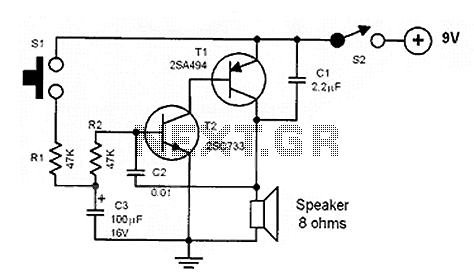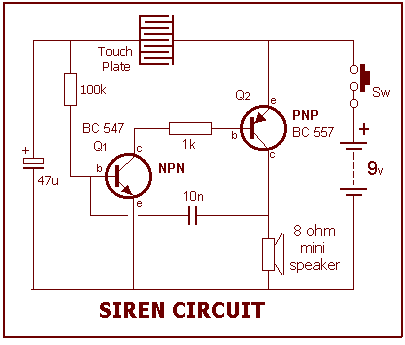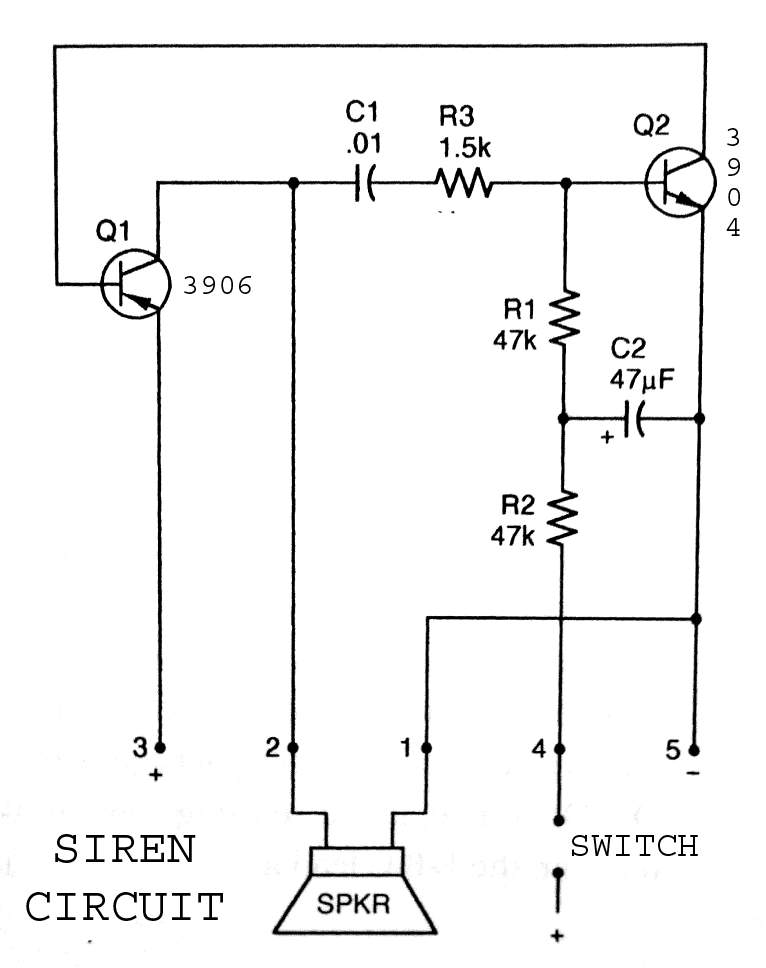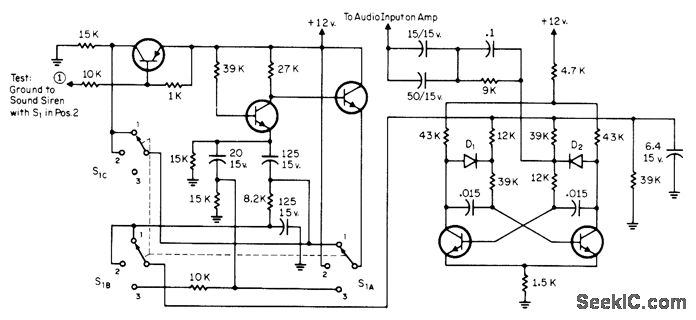
Siren for Factories
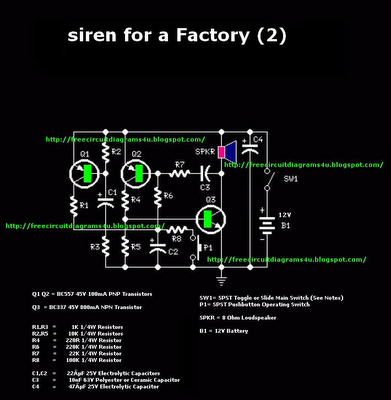
This is a powerful siren circuit diagram. This circuit can provide significant support for alarm systems, enabling users to achieve optimal results.
The siren circuit is designed to produce a loud sound for alerting purposes, commonly used in security systems, emergency alarms, or notification systems. The circuit typically consists of several key components, including a power supply, a triggering mechanism, an oscillator, and the siren itself.
The power supply provides the necessary voltage and current to operate the circuit. Depending on the application, this can range from a simple battery to a more complex AC power source. The triggering mechanism can be a switch, motion detector, or any other sensor that initiates the alarm when a specific condition is met.
The oscillator generates a frequency that drives the siren. This frequency can be fixed or adjustable, allowing customization of the sound produced. An integrated circuit (IC) or a simple transistor-based design may be employed to create the oscillator. The output from the oscillator is fed into the siren, which converts the electrical signal into sound waves.
In addition to these components, the circuit may include resistors, capacitors, and diodes for signal conditioning and protection. Proper selection of these components is critical to ensure the reliability and performance of the siren circuit. The design may also feature a volume control or a tone generator to provide different sound patterns, enhancing the effectiveness of the alarm.
Overall, this powerful siren circuit serves as a vital component in alarm systems, providing audible alerts that can deter intruders or notify individuals of emergencies.This is powerful siren circuit diagram. You can get lots of supports from this circuit because you can use this circuit for your alarm circuit then you will be able to get maximum results. 🔗 External reference
The siren circuit is designed to produce a loud sound for alerting purposes, commonly used in security systems, emergency alarms, or notification systems. The circuit typically consists of several key components, including a power supply, a triggering mechanism, an oscillator, and the siren itself.
The power supply provides the necessary voltage and current to operate the circuit. Depending on the application, this can range from a simple battery to a more complex AC power source. The triggering mechanism can be a switch, motion detector, or any other sensor that initiates the alarm when a specific condition is met.
The oscillator generates a frequency that drives the siren. This frequency can be fixed or adjustable, allowing customization of the sound produced. An integrated circuit (IC) or a simple transistor-based design may be employed to create the oscillator. The output from the oscillator is fed into the siren, which converts the electrical signal into sound waves.
In addition to these components, the circuit may include resistors, capacitors, and diodes for signal conditioning and protection. Proper selection of these components is critical to ensure the reliability and performance of the siren circuit. The design may also feature a volume control or a tone generator to provide different sound patterns, enhancing the effectiveness of the alarm.
Overall, this powerful siren circuit serves as a vital component in alarm systems, providing audible alerts that can deter intruders or notify individuals of emergencies.This is powerful siren circuit diagram. You can get lots of supports from this circuit because you can use this circuit for your alarm circuit then you will be able to get maximum results. 🔗 External reference
